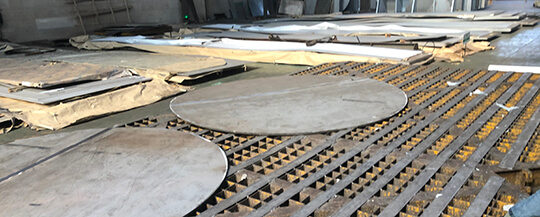Composite material pressure vessels can be divided into cylindrical, spherical, annular, etc. according to their geometric shapes. In this paper, cylindrical composite pressure vessels are studied, and the head section is a standard ellipsoidal structure. At present, the fiber winding molding process is used to manufacture composite pressure vessels. The winding molding process is to wind continuous fibers (or cloth tapes, prepreg yarns) impregnated with resin glue (or binder) in a specific way according to certain rules. Then put the wound product in a curing oven or oven for curing. After curing, remove the core mold from the product, and then process and modify the product to obtain a composite product. Due to the complexity of the winding molding process, the winding speed, fiber tension, temperature and humidity of the environment and other process parameters in the winding process have a greater impact on the quality of the finished product. According to the difference between the physical and chemical states of the resin matrix in the process of filament winding molding, it can generally be divided into three types: dry winding, wet winding and semi-dry winding.
1. Dry winding
Dry winding is a molding process in which the pre-impregnated sand tape is heated on a winding machine to soften it to a molten state, and then wound on the core mold. The prepreg yarn used in winding is usually manufactured by professional prepreg equipment. The resin content in the prepreg yarn and the size of the prepreg yarn can be strictly controlled within the required range to obtain high-quality products; the winding speed is fast, usually Up to 100 meters to 200 meters per minute, the production efficiency is high; the winding equipment is clean, the labor environment is sanitary, and the conditions are good; but its disadvantages are that the equipment used in the winding is expensive and the interlayer shear strength of the product is not ideal.
2. Wet winding
Wet winding dry is a process in which fiber yarn or fiber cloth is impregnated with resin glue through a dipping device and wound on a core mold with a certain tension, and then solidified and formed. Wet winding does not require pre-impregnation equipment, and the equipment investment is small; the material requirements are not high, and the material selection is convenient, so the investment is not large and it is more economical. However, the quality of the yarn piece is not easy to control and inspect, and it is difficult to control the tension of the fiber during the winding process; the glue contains a large amount of solvent, which is easy to produce bubbles during curing; compared with the dry method, the working environment is not hygienic and the conditions are poor. Clean and maintain the tension roller and dipping roller frequently.
3. Semi-dry winding
Semi-dry winding is the two processes after the fiber is dipped to obtain the dipped yarn, and the dipped yarn is wound into the core mold. A drying process is added, which can effectively remove the solvent in the dipped yarn. Compared with the dry method, the entire set of prepreg equipment is omitted, the drying time is reduced, and the entire winding process can be completed at room temperature; compared with the wet method, the content of bubbles in the product is reduced. Product quality has been improved.
Among these three winding methods, the most common application is wet winding; while in the high-precision, high-performance cutting-edge technology field, dry winding is usually used.
